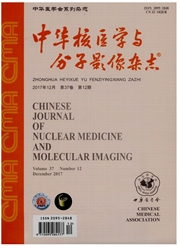

 中文摘要:
中文摘要:
目前,阿尔茨海默病(AD)被认为是一个连续动态的病理生理过程,由β淀粉样蛋白斑(Aβ)的聚集引发一系列瀑布样的神经元变性反应,使得神经元减少、突触功能降低,导致认知功能障碍并最终发展为痴呆.除了Aβ的病理过程外,许多研究表明,神经炎性反应在AD的发病过程中起到了至关重要的作用.其中,小胶质细胞(MG)在神经炎症病理过程中被激活且线粒体外膜表达上调一种转运蛋白(TSPO,18kDa),因此使用PET对MG上调的TSPO进行显像将有助于疾病的诊断和对治疗反应的监测.笔者对MG在神经炎性机制中的作用及其常用的PET显像剂进行综述.
 英文摘要:
英文摘要:
Alzheimer disease (AD) is considered a continuous and dynamic pathophysiological process.The disease is characterized by a series of neuronal degeneration reactions caused by amyloid plaque (i.e., amyloid-beta, A beta) aggregation leading to decreased neurons, reduced synaptic function,cognitive dysfunction, and, eventually, dementia.Besides the pathological process of A beta, numerous studies have shown that neuroinflammation performs a crucial function in the pathogenesis of AD.The in vivo use of PET to monitor the translocator protein (TSPO) upregulation of activated microglia during inflammation is helpful in diagnosing the disease and detecting treatment responses.This article will review the functions of microglia in neural inflammation and commonly used PET imaging agents.
 同期刊论文项目
同期刊论文项目
 同项目期刊论文
同项目期刊论文
 期刊信息
期刊信息
